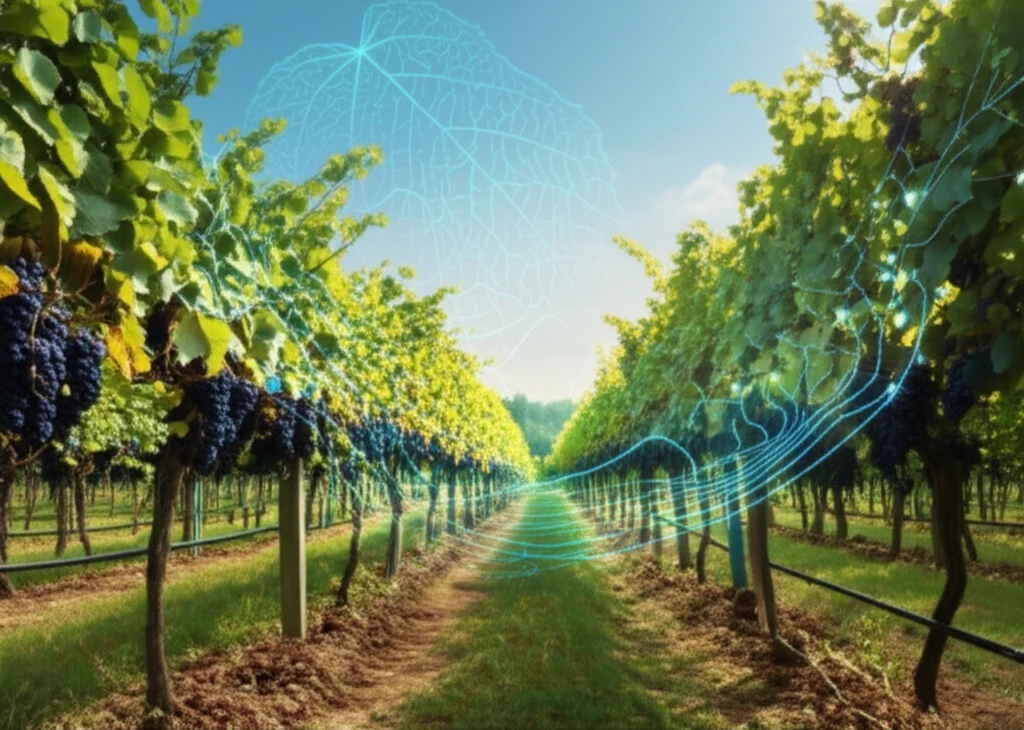
Is Your Vineyard Thirsty? How Tech Can Tell You What Your Grapevines Need
"New research uses hyperspectral imaging and gray-level texture analysis to optimize irrigation for grapevines, ensuring healthier plants and better yields."
For vineyard managers, few things are as critical as proper irrigation. Too little water, and you risk stressing your grapevines, reducing fruit yield and quality. Too much, and you can cause a host of other problems, potentially leading to plant death. Water stress, indicated by closed stomata and restricted transpiration, is a common issue that directly impacts fruit production and its internal characteristics. But how do you know exactly how much water your vines need?
Traditional methods, such as pressure bombs and leaf porometers, are time-consuming and not practical for large-scale vineyards. Infrared thermography, which measures canopy temperature, is another option, but it requires additional environmental data to calculate crop water stress. Light interception methods, while useful, only provide indirect indications of water status. These methods often fall short of providing precise, real-time data that can drive informed irrigation decisions.
Fortunately, innovative technologies are stepping in to fill this gap. Recent research leverages hyperspectral imaging to quantify water content and detect water stress in plants with greater accuracy and efficiency. By combining reflectance data with advanced texture analysis, vineyard managers can gain a more comprehensive understanding of their plants' needs, leading to optimized irrigation and healthier, more productive grapevines.
Hyperspectral Imaging: A Clearer Picture of Vine Hydration

Hyperspectral imaging measures the reflectance and gray-level texture features of grape leaf surfaces, providing detailed data that can be used to predict water content. This technology captures images across a wide spectrum of light, including visible and near-infrared (Vis/NIR) wavelengths. Because plant pigments like chlorophyll absorb light in the visible band and reflect it in the near-infrared band, changes in reflectance patterns can indicate water stress.
- Reflectance Data: Measures how much light is reflected by the leaf at different wavelengths.
- Gray-Level Co-occurrence Matrix (GLCM): Analyzes the spatial relationship of pixels in an image to extract texture features.
- Partial Least Squares (PLS): A statistical method used to build predictive models from complex data sets.
The Future of Vineyard Management
By integrating Vis/NIR hyperspectral imaging with GLCM texture analysis, vineyard managers can gain a more accurate and nuanced understanding of their vines' water needs. This technology offers a rapid, non-destructive way to assess plant health and optimize irrigation strategies. The ability to predict water content accurately can lead to healthier plants, improved fruit quality, and more efficient use of water resources, contributing to a more sustainable and productive vineyard. As technology advances, expect to see even more sophisticated tools that help growers manage their crops with precision and care.
